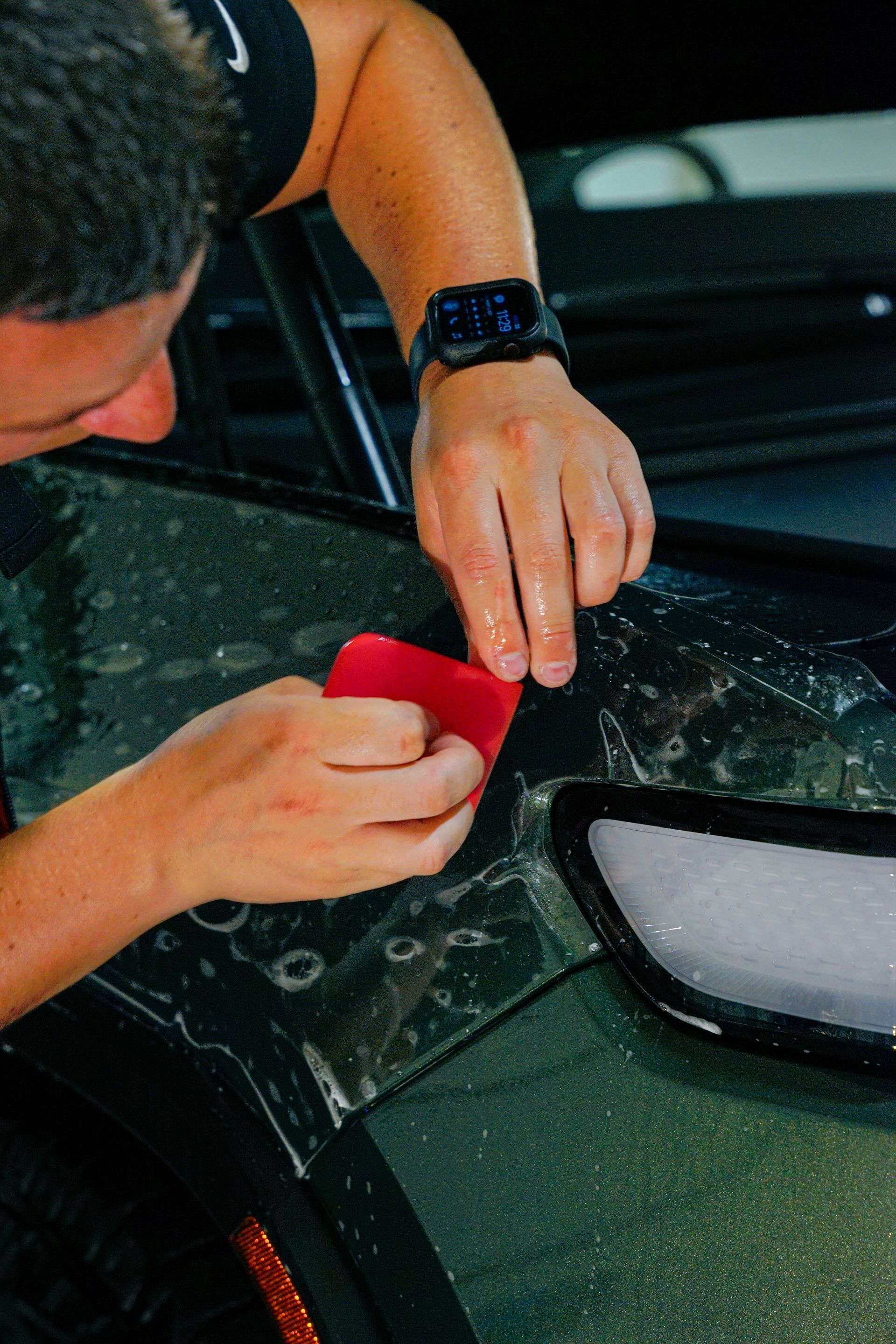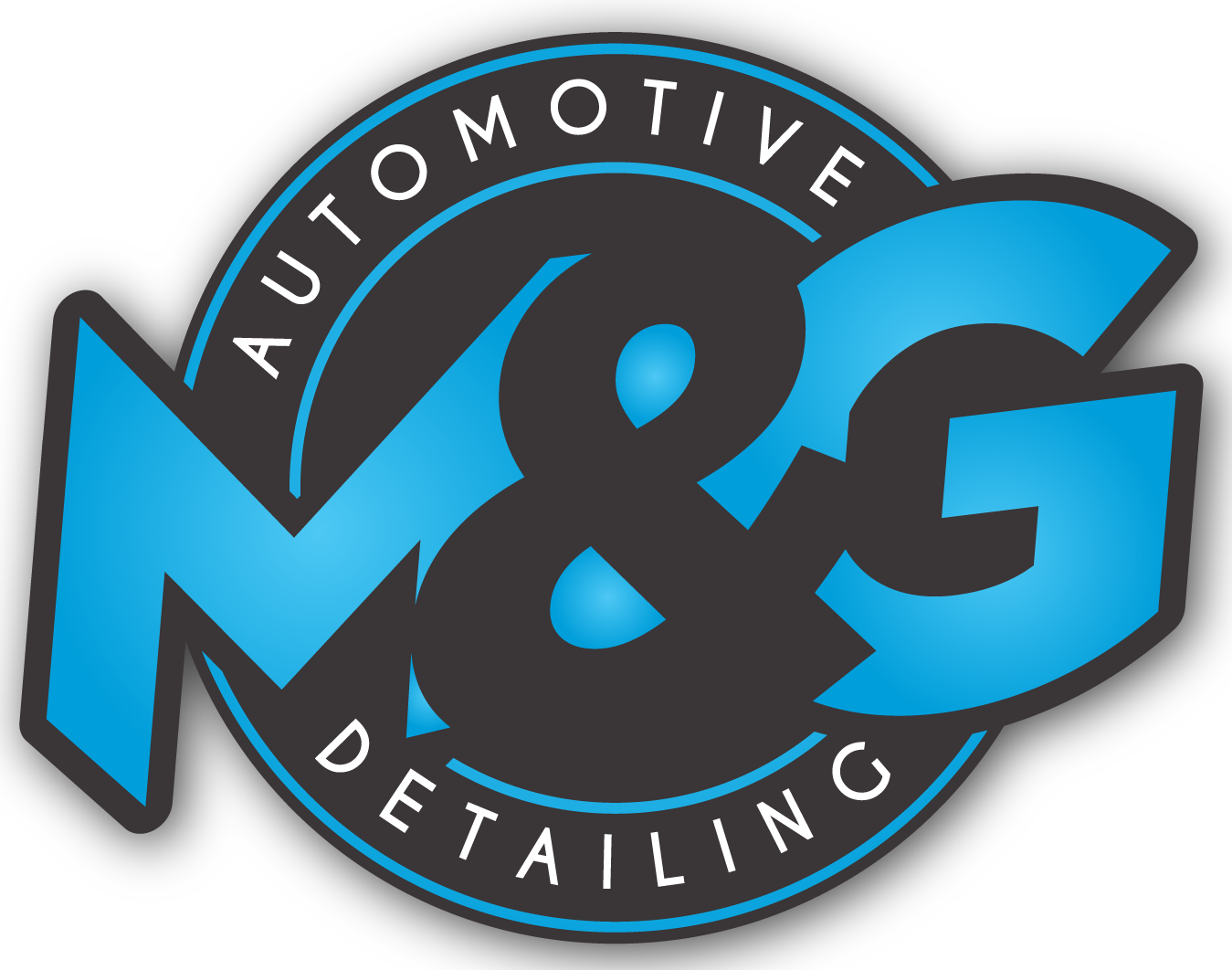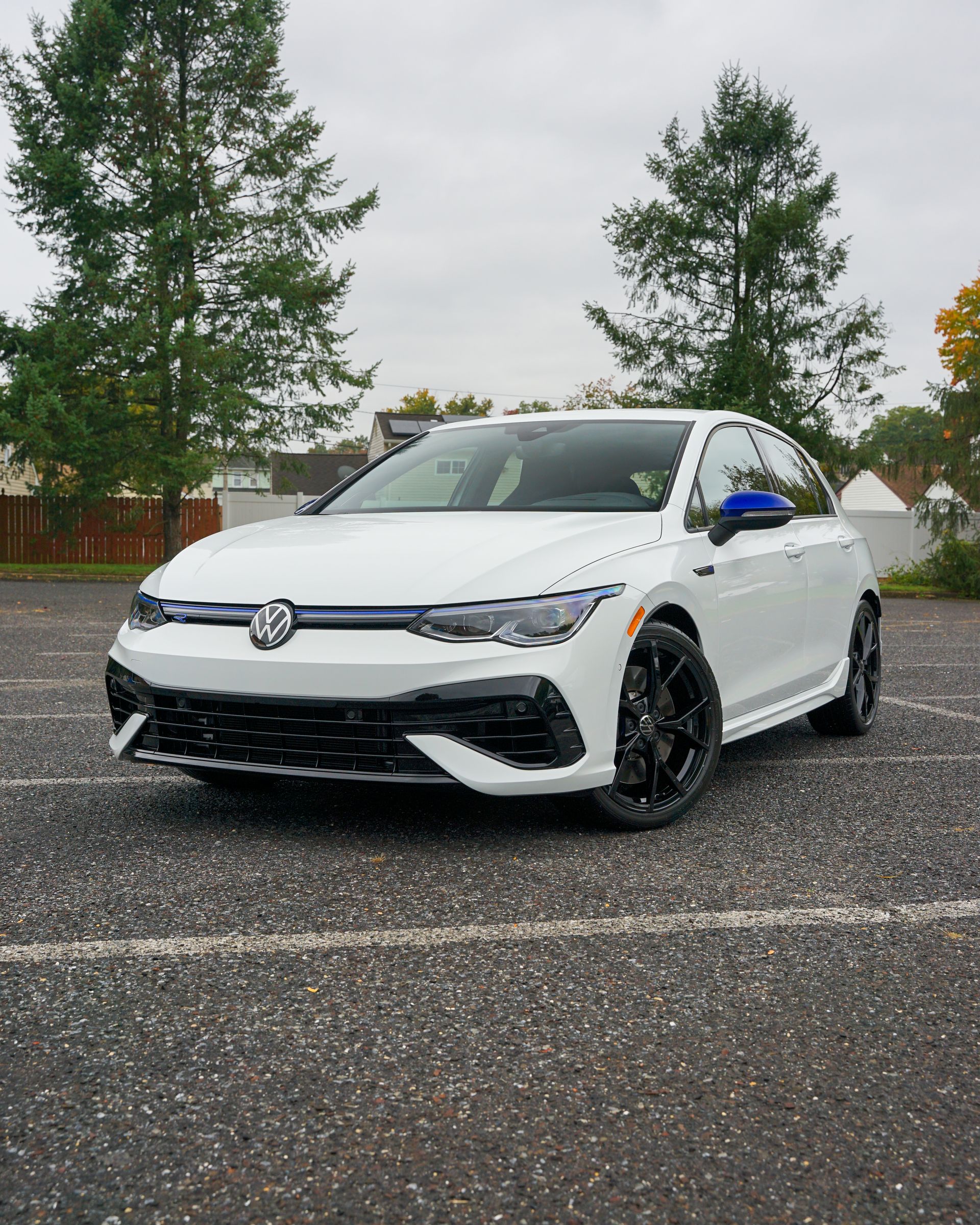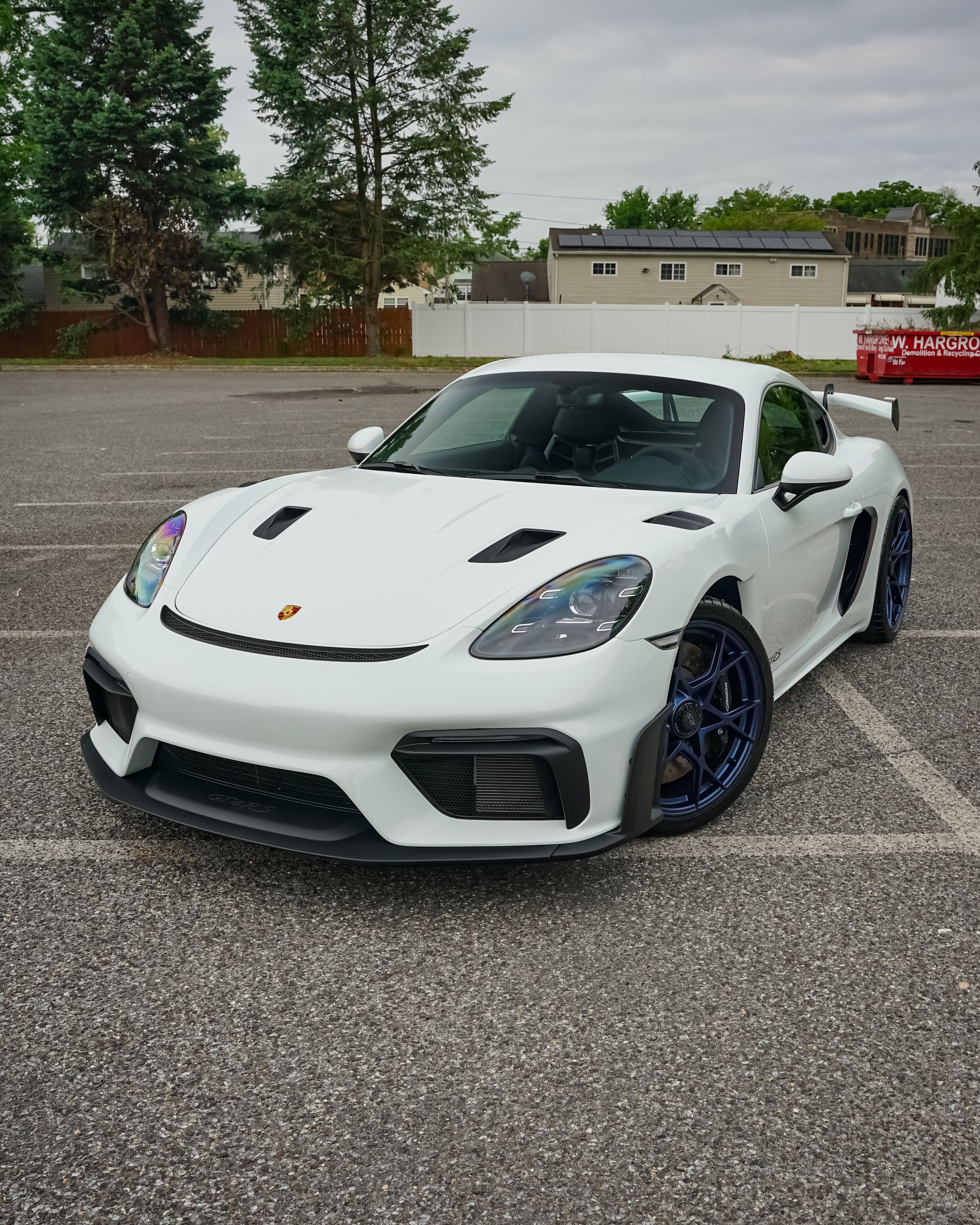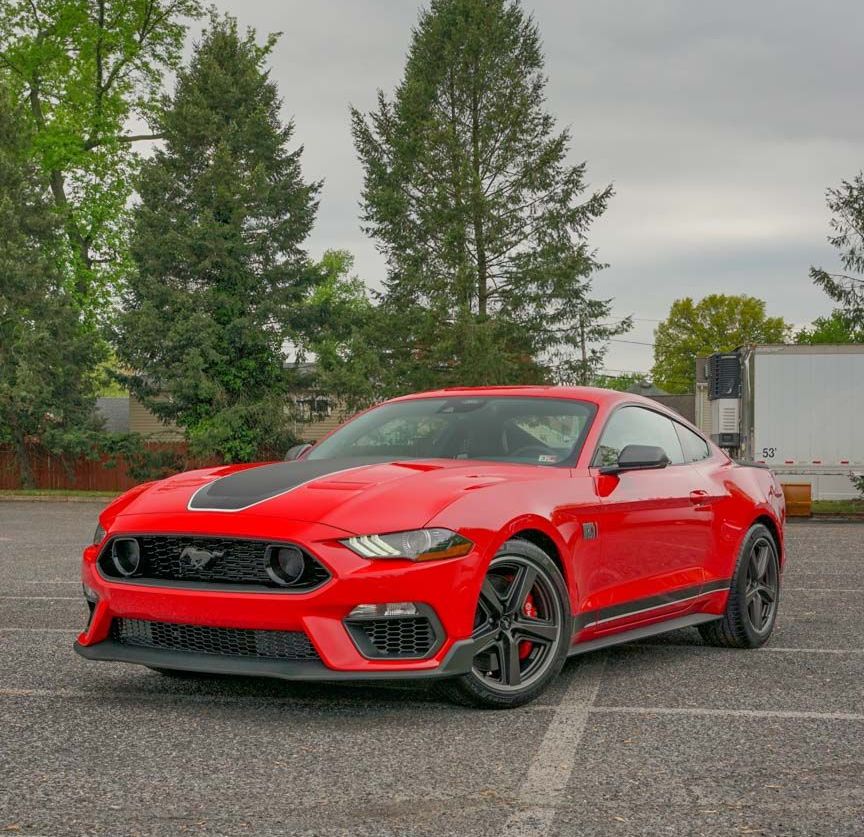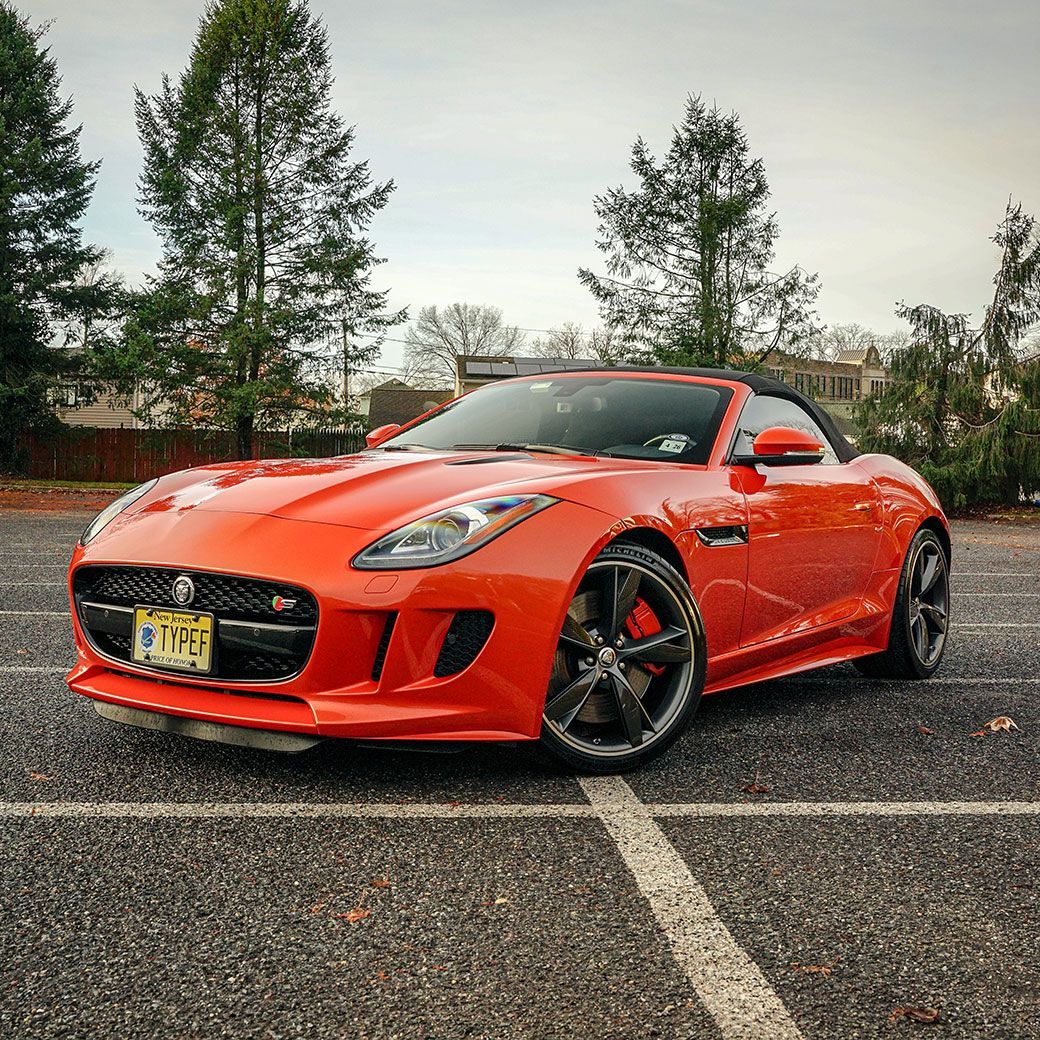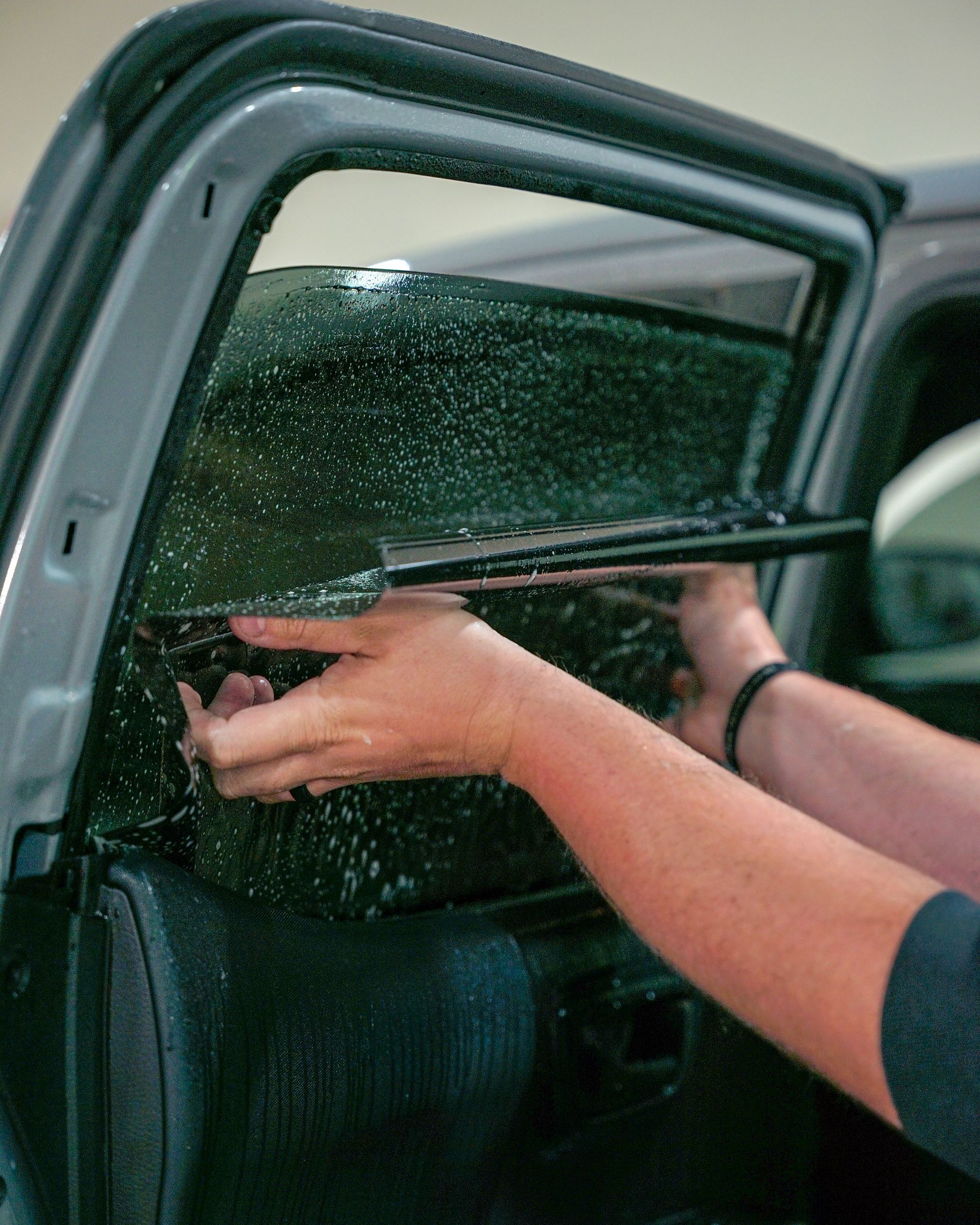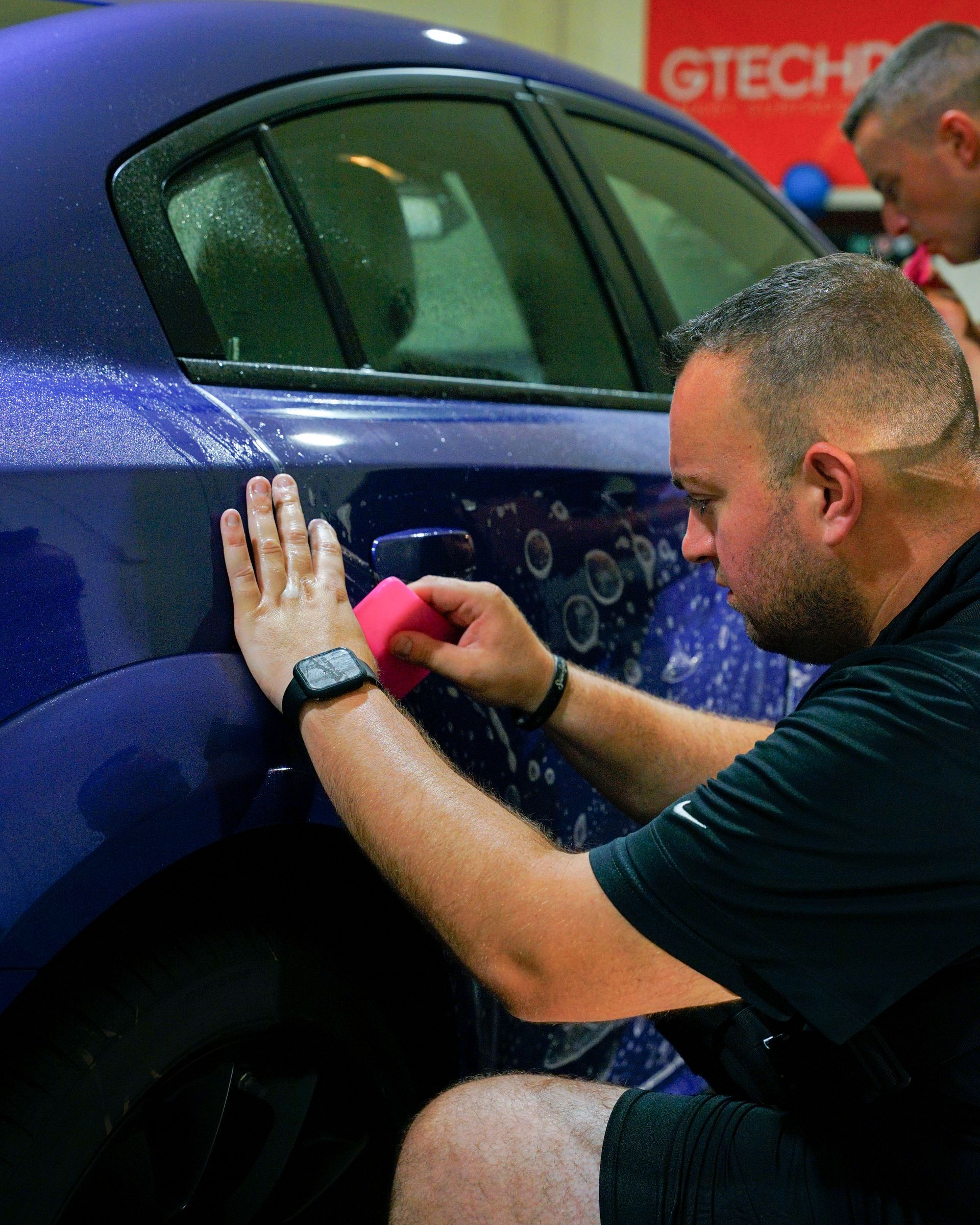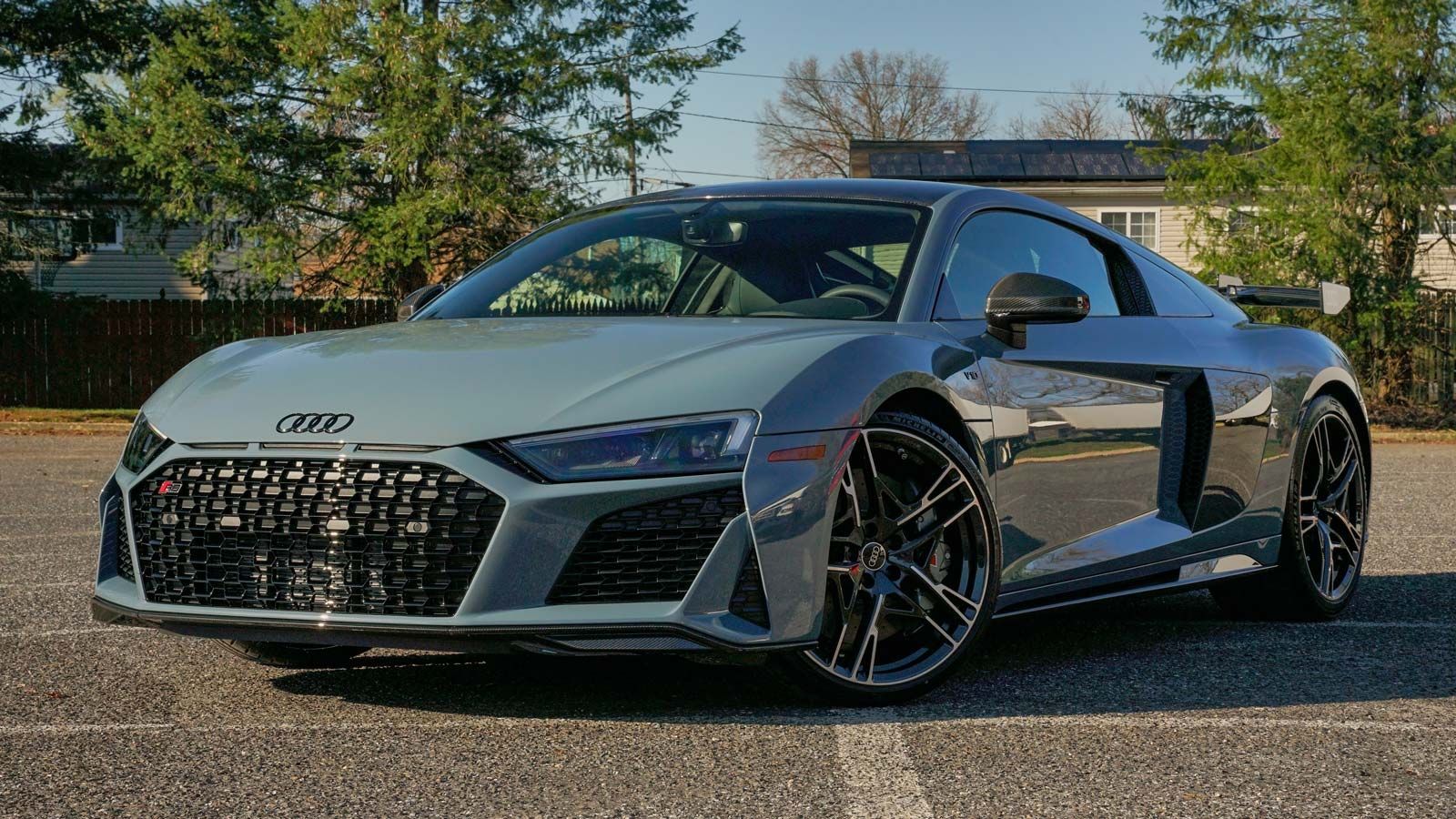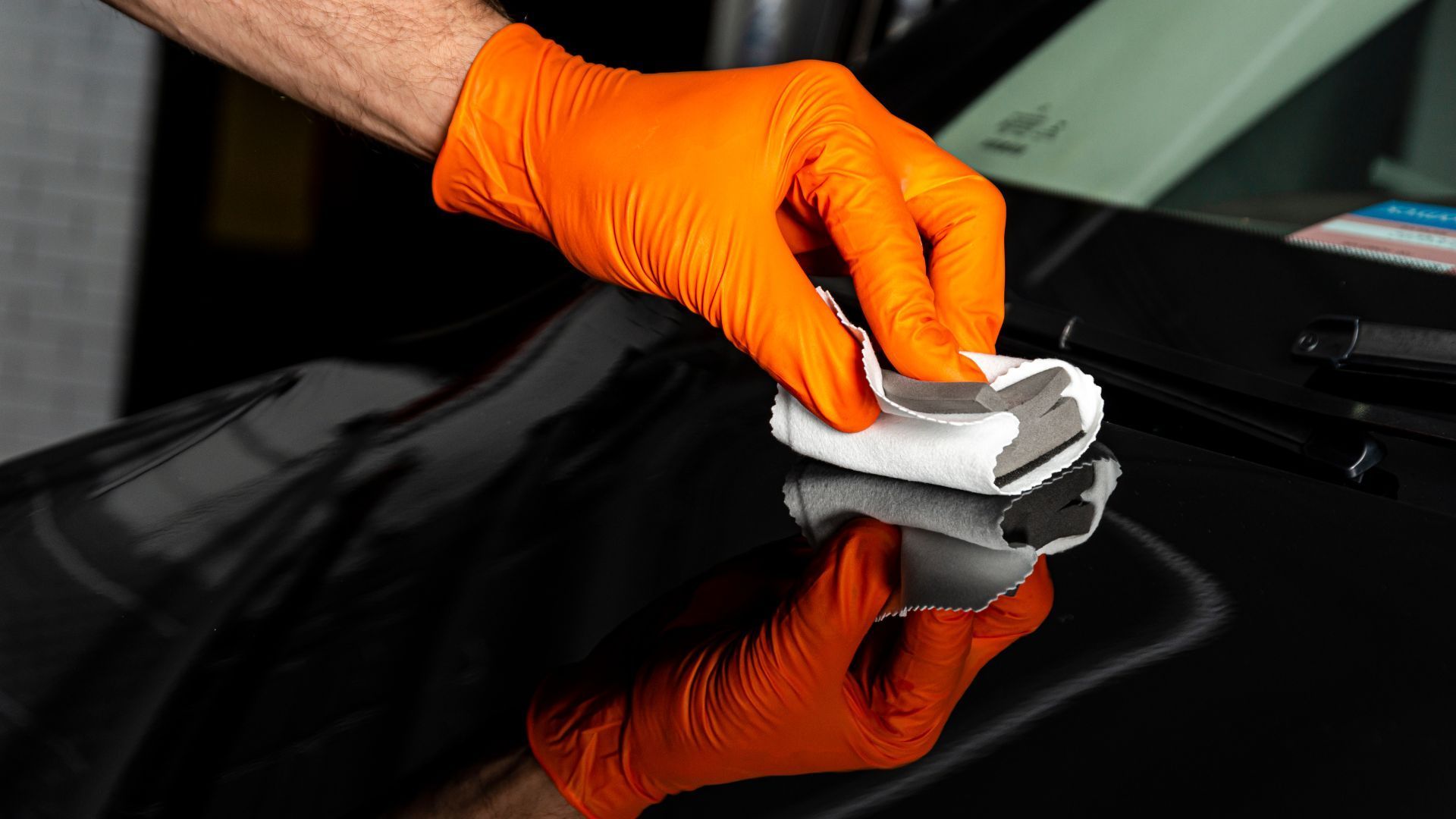How Ceramic Coating Enhances Your Car’s Shine and Gloss: A Guide to Protection
When it comes to keeping your car looking sharp, many people think it's all about washing and waxing. But what if there was a way to enhance your car’s shine while also protecting it for years? That’s where ceramic coating comes in. This modern solution is not just a fancy wax; it creates a lasting layer of protection that transforms how your vehicle appears and holds up against wear and tear. After diving into the benefits and application of ceramic coatings, you might find yourself reconsidering how you care for your car.
Ceramic coating enhances your car's shine and gloss by chemically bonding with the paint surface to create a high-gloss reflective layer that amplifies the vehicle's overall appearance. This protective barrier not only elevates the visual appeal but also provides long-lasting durability against environmental contaminants, ensuring that your vehicle looks glossy and new for years to come.
How Ceramic Coating Enhances Your Car's Appearance
Ceramic coatings are revolutionizing automotive care by delivering an exceptional, high-gloss finish while providing superior protection. Unlike traditional waxes, ceramic coatings utilize advanced nanotechnology to enhance your car's aesthetic appeal and longevity. Below are some key benefits that make ceramic coatings a must-have for car enthusiasts:
- Extraordinary High-Gloss Finish: Ceramic coatings deliver a stunning, mirror-like shine that far surpasses traditional waxes. By filling in tiny imperfections on the paint surface, nanotechnology creates a perfectly smooth and reflective layer. Imagine sunlight striking your car and creating a gleaming, showroom-like finish that turns heads wherever you go.
- Increase in Gloss Levels: Cars treated with ceramic coatings can exhibit up to a 30% boost in gloss levels compared to traditional methods. This high-gloss effect adds not only brilliance but also remarkable depth, making your vehicle look fresh off the production line. The result is an unmistakable, sharp reflection that makes every curve of your car more captivating.
- Enhanced Color Depth and Vibrancy: Ceramic coatings intensify the natural hues of your vehicle’s paint, amplifying colors with richness and vibrancy.Whether it’s a deep midnight black or a vivid cherry red, the difference in saturation is astonishing. Light interacts with the coating to produce dynamic color shifts under different conditions, improving saturation by up to 20%.
- Superior Hydrophobic Properties: One of the most practical benefits of ceramic coatings is their exceptional hydrophobicity. Water beads up and rolls off effortlessly, reducing water spots and mineral deposits. Dirt and grime wash away more easily, meaning you’ll spend less time cleaning and more time enjoying your spotless vehicle.
- Easier Maintenance and Reduced Wear: With proper washing techniques, such as using pH-neutral soaps, ceramic coatings help reduce the need for abrasive polishing. This minimizes wear on your car’s finish, prolongs the coating’s life, and makes upkeep far less of a chore. Maintaining the hydrophobic layer ensures your vehicle stays cleaner for longer periods.
- Robust Protection Against Environmental Damage: Ceramic coatings offer formidable protection against harmful elements like UV rays, acidic rain, and bird droppings. With up to 99% UV protection, your car’s paint is safeguarded against fading and sun damage. Unlike traditional waxes that last only a few months, high-quality ceramic coatings can last between two to five years with proper care.
By enhancing shine, color, and protection, ceramic coatings not only elevate your vehicle’s aesthetics but also make maintenance more efficient. These benefits ensure your car remains stunning, durable, and protected for years to come.
Protective Benefits of Ceramic Coating
One of the standout features of ceramic coatings is their impressive durability, offering long-lasting protection for your car's paint. Unlike traditional wax or sealants that require frequent reapplication, a high-quality ceramic coating can last anywhere from two to five years with proper maintenance. Imagine driving a vehicle whose surface remains intact and glossy year after year—this durability enhances appearance while providing peace of mind against damaging elements.
The powerful hydrophobic properties of ceramic coatings create an environment where water beads off the surface instead of spreading. With a contact angle of 110 degrees, washing your car becomes incredibly easy because dirt and grime have a tougher time adhering. You may find yourself cleaning your vehicle 50% easier than if you were just using standard wax finishes. The beauty of ceramic coatings lies in their ability to deflect liquids and contaminants. Once applied, maintenance becomes almost effortless.
Chemical Resistance
Additionally, these coatings exhibit impressive chemical resistance against harsh substances, including acid rain, bird droppings, and other environmental pollutants. They withstand pH levels ranging from 2 to 12, ensuring that even in challenging weather, your paint remains shielded from harm.
- Acidic rain often comes with potential for etching; ceramic coatings repel such contaminants.
- Tree sap can be notoriously tough to remove without damage; ceramic coatings simplify cleaning.
- Bird droppings, if left untreated, these can corrode paint; a ceramic coat ensures easy removal.
All these benefits accumulate to create a protective layer, enhancing your vehicle's exterior while fundamentally strengthening it.
Durability and Weather Resistance
A car isn’t just a shiny object parked in your driveway; it’s an investment that deserves long-lasting protection. Durable ceramic coatings rise to the occasion, offering robust defense against a variety of weather-related challenges. You might wonder how these coatings manage to provide such formidable protection. High-quality ceramic coatings boast impressive longevity. On average, consumer-grade coatings last about 2 to 5 years under normal conditions. However, when professionally applied, top-tier products can easily exceed ten years. This is significantly longer than traditional waxes or sealants that may only offer protection for a few months. By investing in ceramic coating, you’re setting your vehicle up for a decade of shine and safety.
Remember: Proper maintenance plays a crucial role in maximizing the lifespan of these coatings. Regular washes and avoiding abrasive cleaning materials will help keep that protective layer intact. Now, consider the resilience of ceramic coatings. They stand strong against rain and snow, effortlessly shedding water due to their hydrophobic properties. This means that moisture beads up and rolls off the surface rather than lingering and potentially causing damage. With a contact angle of 100° to 110°, they drastically reduce the formation of water spots and make cleaning easier—no more tedious scrubbing! While it's important to note that ceramic coatings aren’t completely scratch-proof, they offer impressive resistance to environmental contaminants. The hardened surface layer can withstand light exposure to contaminants like dust and hard water deposits without losing its integrity.
Application Process: What to Expect
Applying a ceramic coating isn't as simple as slapping on wax; it's a detailed procedure that ensures your car's paint receives the utmost care. It typically involves several critical steps to achieve the best results. Before anything, it’s crucial to prepare your vehicle thoroughly. A meticulous cleaning is essential because any dirt or grime can hinder the bonding process of the ceramic coating with the paint surface. This initial step can take anywhere from 2 to 4 hours, depending on how much detailing your car needs. Think of it like preparing a complicated dish; you wouldn’t want anything impure to taint your masterpiece.
Professional Ceramic Coating vs. DIY Kits
While DIY kits are available for application, they often fall short when compared to professional services that guarantee thorough coverage and durability. Professionals possess specialized tools and expertise, applying an even coat that amateurs may struggle to replicate. If you truly want your vehicle to shine while being protected for the long haul, investing in a professional application might be worth your consideration.
So let's break down the key steps involved in this meticulous process:
- Surface Cleaning: The first step ensures that the car is immaculate—washed thoroughly and free from contaminants like dirt and grease. This is similar to deciding whether to bake or fry; having a clean surface is critical for transformation.
- Paint Correction: Next comes paint correction, where trained technicians polish out minor scratches and swirl marks that can prevent uneven surfaces from getting their full shine. Think of this stage as removing imperfections from a beautiful piece of fabric before sewing a garment.
- Application: Following this, the ceramic coating itself is applied in small sections. The technician methodically works around the car to ensure every inch gets an even coat; these polymers need precise handling due to their chemical properties that allow them to bond effectively with your car's paintwork.
- Curing: Finally, curing time plays a vital role, needing anywhere from 24 hours up to 7 days depending on environmental conditions and product specifics. This period allows the coating to bond securely with the paint surface, solidifying protection against elements like UV rays and acidic rain.
Once the ceramic coating is applied correctly, it not only protects but also simplifies maintenance routines—ideal for keeping your vehicle looking pristine year-round.
Easy Maintenance Tips for Coated Cars
One of the best advantages of ceramic coatings lies in their ability to significantly reduce the need for frequent, intense cleaning. The hydrophobic properties of these coatings make it difficult for dirt and grime to bond to the surface of your vehicle. A simple rinse with water can often do wonders. However, this doesn’t mean you can neglect your car completely; there are a few key practices that will keep your ceramic-coated car looking immaculate.
- Simple Cleaning Routine: For the everyday upkeep of your vehicle, regularly rinsing it off with water is your first line of defense against dirt accumulation. This simple act removes loose contaminants and allows any remaining dirt to be easily washed away. When it comes to scrubbing up, always opt for a pH-neutral car shampoo. This choice is essential because regular soaps or cleaners can strip away the protective layer established by the ceramic coating. Not only does a pH-neutral solution protect the coating, but using a microfiber wash mitt will also mitigate any chances of scratching the surface during cleaning. After washing, gently dry the car with a soft microfiber towel—this will help avoid water spots that mar its brilliant finish. But our responsibility towards our coated cars does not end at merely cleaning them.
- Periodic Inspections: Conducting periodic inspections is vital for maintaining both the integrity of your ceramic coating and the overall appearance of your vehicle. Regular checks allow you to spot minor issues before they develop into larger problems. For instance, after heavy rainfall or if you notice unusual spots on your finish, take a moment to inspect for stubborn contaminants like water spots or bird droppings; these should be addressed immediately as they can etch into the coating over time if left unattended. Such diligence pays off; staying proactive helps mitigate potential damage from external factors while enhancing the durability of the coating itself.
Is Ceramic Coating Truly Worth It?
To determine if ceramic coating is right for you, it's essential to understand the balance between cost and benefit that it brings to your vehicle. The initial price tag of ceramic coatings can indeed seem daunting—ranging anywhere from $500 for entry-level consumer-grade kits to $2000 or beyond for professional applications. However, consider this: when you factor in potential savings on future paint corrections or waxing sessions, along with the boost in resale value, those numbers start to make a compelling case. In essence, investing now could mean saving more money down the line.
Cost vs. Benefit
When weighing the costs, think about how frequently you wax your car. Traditional waxes typically need reapplication every three months, while sealants last up to a year. On the other hand, a high-quality ceramic coating can provide protection that lasts two to five years, vastly surpassing traditional options. In addition to longevity, ceramic coatings enhance your car's gloss and shine like no other product can—this not only keeps your car looking newer longer but also increases its market value if you ever decide to sell. Another critical point to keep in mind is UV protection. Ceramic coatings provide 99% UV protection, whereas traditional wax only offers around 50%. This means your paint is shielded from fading due to sun exposure, helping maintain that showroom finish for ages.
It’s important to note that some detractors say regular waxing is enough for adequate protection. While they claim waxing can suffice, it simply doesn't measure up in terms of longevity or aesthetics. Once you experience the unique hydrophobic properties of ceramic coatings—where water beads off effortlessly—you’ll find it challenging to settle for less. Weighing both sides is necessary before making a decision. If you're diligent about regular maintenance and care for your vehicle through waxing alone, then perhaps sticking with traditional methods may suit you fine; however, if you're someone who desires long-term benefits without frequent upkeep, then ceramic coatings represent a smart investment.
Ultimately, assessing your specific needs and performing a comprehensive cost-benefit analysis will help clarify whether ceramic coating aligns perfectly with your expectations and lifestyle. Understanding your vehicle's needs against the backdrop of cost will guide you toward making an informed decision about ceramic coatings—one that enhances both shine and longevity for your automobile.
Premium Ceramic Coating Services in Cherry Hill, NJ
Give your vehicle the protection it deserves with M&G Automotive Detailing’s
top-quality ceramic coating services in Cherry Hill, NJ. Our advanced ceramic coatings create a durable, hydrophobic layer that repels water, dirt, and contaminants, keeping your car looking pristine and easier to clean. With expert application and long-lasting results, our ceramic coating services offer superior protection for your car's paint, ensuring it stays glossy and shielded from the elements. Book your appointment today and experience the ultimate in car care! Call us at (609) 923-3123 to get started!

